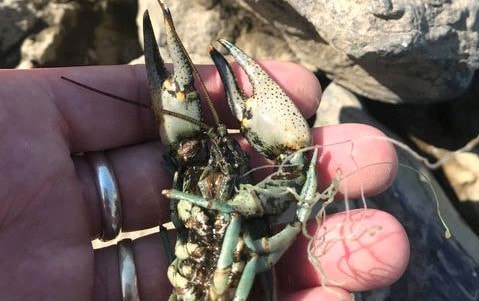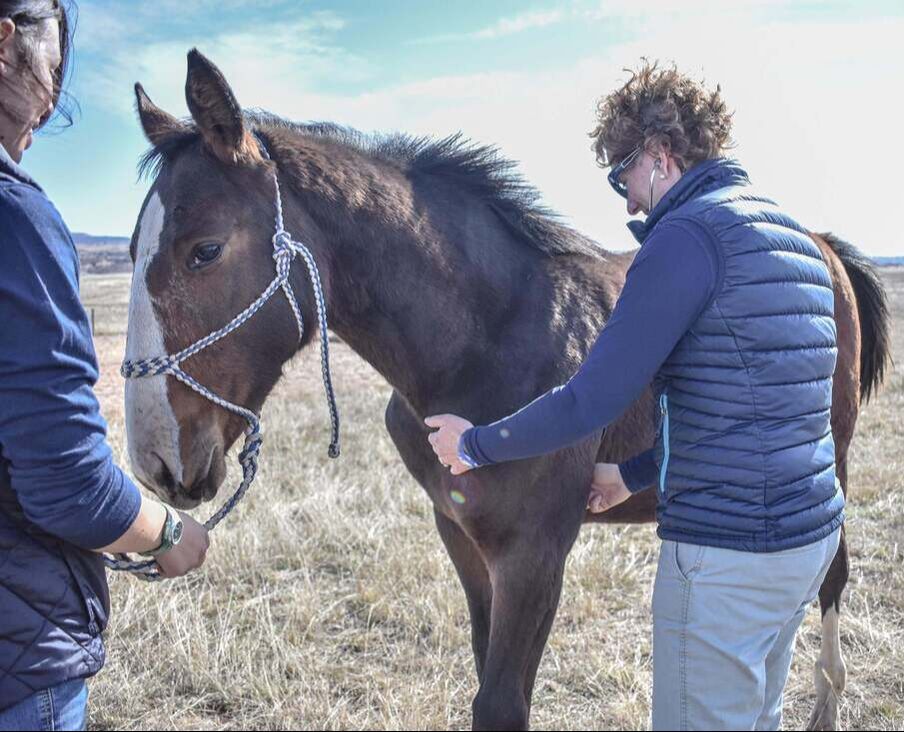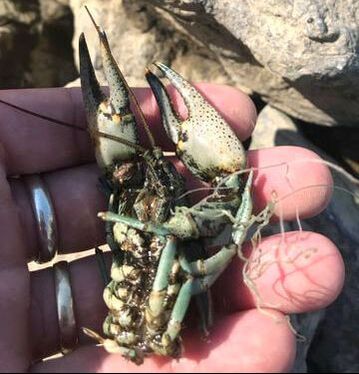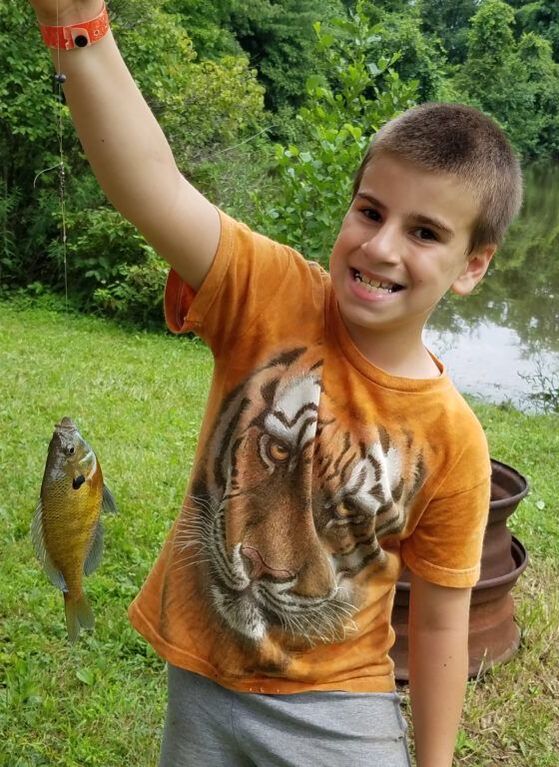|
A former award-winning journalist with The Daily Item newspaper in Sunbury, Middle Susquehanna Riverkeeper John Zaktansky uses his writing skills to engage, educate and empower people throughout the watershed about important aquatic issues that threaten our state's constitutional right to pure water. Three of Zaktansky's environmentally focused columns from 2021 recently won a Keystone state journalism award for sports/outdoors writing. The three columns, judged as one entry, included:
How about 100 dots? A thousand? As a kid, I used to love doing the dot-to-dot or connect-the-dot activities in publications like Highlights magazine. It didn’t usually take too much imagination to figure out what the picture was going to be – even before putting pencil to paper. As I got older, those connect-the-dot pages became more complex. Twenty or thirty points to connect evolved into 100 or more. An activity that used to take a few minutes was now much more time intensive. However, the end results were much more impressive. Details popped and a clearer image came into view as the final dots were connected to the bigger picture. That’s the mental picture one should take away from the recent study by veterinarian Kathleen Mullen and her team from Cornell University that looks at the potential connection between sick foals and the fracking chemicals that may have caused it. “It is a really striking study in that we don’t always see veterinarians involved in cases connected to fracking and environmental issues. It is certainly a small study, but as with most studies related to fracking, it is hard to say with complete certainty that fracking caused the issue – that is true even in larger epidemiological studies,” said Kristina Marusic, a reporter for Environmental Health News, which ran a story about Mullen’s study in May of 2020. “She spent years studying two different farms, looking at every other factor that could contribute to the issue and ruling them out, but you still can’t say it proves fracking chemicals in the water caused the problem beyond a shadow of a doubt. “What it does, however, is get the information out there where others can process it, and maybe they have similar stories and maybe that leads to a bigger finding that is more conclusive,” she said. “There is a much larger body of literature for fracking health impacts on humans – there are now 12 years of scientific research collected. If you have 10 studies that suggest that, for example, a pregnant mother is more likely to have a baby with a lower-than-average birth weight the closer she lives to a fracking well, that has more merit than one study.” Anthony Ingraffea, longtime lead professor of civil and environmental engineering at Cornell University with more than a decade of experience in fracking research and writing, was approached by Mullen early in her study to provide insight on the ways that fracking could be causing an increase in polycyclic aromatic hydrocarbons that may have triggered dysphagia for a number of foals. “We considered the possibility of surface spills leaching down into the water table, or the leaking of materials either going down the well or coming back up into an underground source of drinking water,” he said, although despite their best efforts to find a definitive cause of the dysphagia spike in foals from this specific farm, it isn't conclusive that elevated polycyclic aromatic hydrocarbons in the water caused the issue, or that fracking was the cause of the elevated compounds in the horses' drinking water. “All the intriguing dots suggest a certain outcome, but aren’t positively positive – I consider it more curiously correlative, and as a scientist, that is the best I can say,” said Ingraffea. “If you can’t prove causality, then it is only correlation. As a scientist, we are bound by the rules of the game. It is so hard to prove causality (in these sort of cases) because there are so many moving targets. It can be very frustrating for me, but especially so for those impacted by the situation.” Considering the growth of fracking across the state in the past decade-plus, the number of new wells dug, the number of wells abandoned, the opportunities for a negative impact within the environment – along with the countless studies surrounding all of these scenarios – likely number in the millions, Ingraffea estimated. “Speaking as a scientist with training in mathematics and probability, you can’t roll a dice a million times without snake eyes coming up,” he said. Considering that, Mullen’s study becomes an important dot in a much larger environmentally focused connect-the-dot experience. “This paper will be cited again and again as other similar cases develop in other locations, not just in Pennsylvania. Science was done here. The community was served by this research and the publication of it,” Ingraffea said. “If they didn’t do the work, there would be no dot to connect.” Whether this dot is part of a bigger picture that more conclusively highlights some of the potential health concerns of fracking – or one that eventually suggests the opposite – remains to be seen. To get to that point of clarity, we need more data – more dots. To that end, as Middle Susquehanna Riverkeeper, I encourage anyone who may have important information to share – please do so. Maybe you have seen a trend of illness in animals on your farm (or one you visit) that just doesn’t add up and may be due to something in the water. Or maybe you’ve seen evidence of a spill or leak. Perhaps you work with a company where you know there is an issue that isn’t being addressed – or maybe you have valuable insight that more definitively proves that your group is going above and beyond the call of duty to protect the environment and reduce potential negative ripple effects. I have no pre-set agenda in this request, no side-taking, leaning or bias. As Riverkeeper, my goal is simply to protect and promote our river-based resources. Your information could provide the necessary dots needed to get us closer to that goal. I am available via email at [email protected]
The unfortunate outcome provides an important red flag ahead of a Memorial Day weekend where people traditionally surge to the river and other outdoor hotspots to unofficially kick off summer and enjoy the first of two statewide free fishing days offered by the Pennsylvania Fish and Boat Commission. The dead crayfish was found during an impromptu trash cleanup on Friday, May 21, in an area below the dam where anglers frequent. Discarded bait containers, plastic cups from fast food, beef jerky wrappers, a plastic license holder and pile of other random debris associated with fishing were all collected. The next morning, on May 22, another bag of trash -- including a Zip-loc baggie filled with blood and hearts/livers used for bait -- was picked up at the same location. Five days later, on May 27, the spot yielded yet another pile of litter, including soda cans, empty bait containers and other garbage. This is just one window into a growing problem of carelessness that gives a black eye to a group of people typically known for their many efforts toward outdoor conservations. Anglers help fund research and important programs that help preserve our aquatic ecosystem via proceeds from license sales. Many anglers are active in groups such as Trout Unlimited, watershed associations, citizen science studies and additional efforts to protect and promote our river-based resources. One of the biggest issues facing the fishing world is lack of access to prime waterway locations -- much of which is due to landowner fear of excess litter and property damage. Earlier this spring while fishing a stretch of the Little Shamokin Creek outside of Sunbury, my daughter and I collected quite a bit of trash left behind earlier that day by anglers. A half-full bottle of orange juice, an empty can of corn likely used for trout bait and numerous cups and worm containers littered the shoreline. I can see why some landowners are hesitant to grant access. Last month in the lower section of the Susquehanna River watershed, near Lancaster, an osprey was spotted dangling from a bridge, its wing entangled in discarded fishing line. The media attention surrounding the dangerous rappelling-based, bridge-side rescue provided a must-see video that hopefully inspires more people to adapt the seven important principles taught via the Leave No Trace movement. Ultimately, our natural resources provide a valuable litmus test that can tell you a lot about a person's moral compass. Hunting ethics, resiliency when facing unexpected challenges, creative problem solving and a slew of other attributes lead to opportunities for reflection and personal growth. I remember thinking, once upon a time, that a successful angler or hunter is measured in the fullness of a fishing creel or the size of the rack on a recently harvested buck. However, a true outdoorsman shouldn't be defined by what he or she brings home after a day in the outdoors -- but more importantly, what's left behind.
To a few of the people passing by, the scene was one of horror. The six kids were coated in various shades of brown. Their clothes were caked with clay, their hair matted with mud. These children were a mess. How could their parents allow such a thing?
To the parents who were watching from a distance, careful not to intrude in this period of unstructured outdoor play and exploration, the whole picture was one of beauty. These children were working together with a common vision — engaged in a period of exploration that easily was worth the multiple loads of laundry and clogged shower drains that came afterward. Many consider this the age of information. We’ve replaced large libraries of clunky encyclopedias with one-click solutions via a Google search browser. Everyone, it seems, has a Smartphone attached to one hand, ready at a moment’s notice to tackle the next major dilemma with the push of a button. But one issue doesn’t seem to have an easy answer. Why are kids struggling more than ever with diagnoses such as Attention Deficit Hyperactivity Disorder (ADHD), Oppositional Defiant Disorder (ODD) and a whole slew of other behavioral acronyms? Actress Jamie Lee Curtis has a solution. In various radio and television public service announcements a number of years ago, she pitched the importance of family mealtime, giving listeners an easy recipe for the common meatloaf. Psychiatrists attempt to fix the issue with a combination of a prescription pad and a pen. While each of these solutions offer important assistance in the battle against certain childhood struggles as we attempt to help our children become responsible young adults, perhaps there is a solution many people overlook. In his book, “Last Child in the Woods,” author Richard Louv warns of the negative effects of “Nature Deficit Disorder.” There is a growing amount of respectable research that shows a direct correlation with a reduction of unstructured outdoor play and an increase in longterm behavior issues. Outdoor educator Jon Beam is one of many who sees the negative effects. “Kids need time to play and explore outdoors without boundaries. It helps them develop a better sense of self and the world around them,” Beam said. “Video games, television, computers and the Internet can really take time away from good unstructured time exploring outdoors.” He adds: “Making that connection with your kid and getting them excited about the outdoors doesn’t have to be hard for parents. It’s all about making the time and experiencing the outdoors together. It’s OK to admit you don’t know what something is. Spending time together looking up what made a certain animal track or identifying a bird can be just as much fun as being outdoors in the first place. Make it a game — a mystery.” A program planned in June by the Middle Susquehanna Riverkeeper Association — at the same campground where six young children explored a muddy creek bottom a number of years ago — offers a creative new way to engage young people with their outdoor resources. The HERYN (Helping Engage our River's Youths with Nature) Program is offering one-day sessions for kids aged 10-13 offering hands-on fishing and kayaking instruction. The program days are slated June 21-26, with participants alternating between fishing and kayaking sessions totaling three hours in each area. Instructors for the sessions bring an extensive background in angling, paddling sports and youth education. For more information, including bios on each instructor, registration and opportunities to get involved, visit http://www.middlesusquehannariverkeeper.org/heryn-program.html Ultimately, there are few activities more therapeutic than fishing, kayaking and bonding with others along the network of tributaries that feed into the Susquehanna.
0 Comments
Leave a Reply. |
AuthorsRiverkeeper John Zaktansky is an award-winning journalist and avid promoter of the outdoors who loves camping, kayaking, fishing and hunting with the family. Archives
July 2024
Topics |




 RSS Feed
RSS Feed